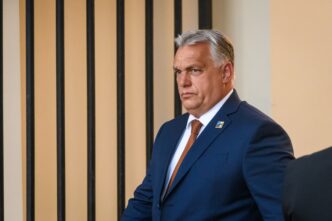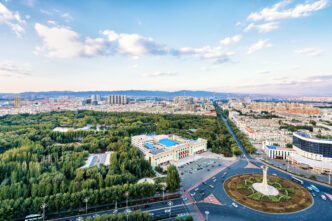The transition of papal leadership, whether due to death or resignation, is a complex process involving ancient rituals that guide the changeover of leadership for both the global Catholic Church and the Vatican state. Here are key terms—some in Latin—to understand the unfolding events:
Camarlengo of the Vatican
The Camarlengo is the cardinal responsible for formally confirming the pope’s death and then sealing their quarters and office. Between this time and the election of a new pope, the Camarlengo manages the “temporal goods and rights” of the Holy See. Currently, this role is held by Cardinal Kevin Farrell, an American of Irish descent.
College of Cardinals
The College of Cardinals comprises 252 cardinals worldwide. They oversee the affairs of the Holy See between papacies, albeit with limitations. Of these, 135 are “cardinal electors,” who convene in the Vatican to select the new pope. The vast majority of electors—108—were appointed by Pope Francis, according to Vatican statistics.
Conclave
The conclave is the closed-door meeting of cardinal electors to choose the new pope, held in the Sistine Chapel. The term, meaning “with a key,” originated in the 13th century to describe the practice of locking in the cardinals until the election concludes. It must start no later than 20 days after the pope’s death or resignation. Electors are isolated from outsiders during the process. Recent popes have been elected within a few days.
Dean of the College of Cardinals
The current Dean is Cardinal Giovanni Battista Re. He informs other cardinals and ambassadors to the Holy See of the pope’s death once verified by the Camarlengo. He also convenes the conclave and leads the proceedings as electors take their oaths. Once a new pope is elected, the Dean asks if they accept and what name they wish to adopt.
Domus Santa Marta
This Vatican guesthouse, built in 1996, specifically accommodates cardinals during a conclave and also serves as a hotel for visiting priests and Vatican officials. Pope Francis chose to live in suite 201 here, rather than the papal apartments in the Apostolic Palace.
“Extra Omnes”
This Latin phrase, meaning “all outside,” is declared by the master of papal liturgical celebrations, currently Archbishop Diego Ravelli, to request everyone except the cardinal electors to leave the Sistine Chapel, marking the beginning of the voting process during the conclave.
Fisherman’s Ring
Each pope receives this ring during the mass marking the start of their pontificate. Named for Jesus’ directive to St. Peter, the first pope, to be a “fisher of men,” it was traditionally destroyed after a pope’s death. Now, it is “canceled” or marked to prevent its use as a seal.
General Congregations
This term refers to the meetings of all College of Cardinals members following a pope’s death and before the conclave begins, to discuss key Church issues. All healthy cardinals participate in this gathering at the Vatican Apostolic Palace, discussing conclave preparations under oath and in secrecy.
“Habemus Papam”
This Latin phrase translates to “We have a pope.” These words are used by the “Protodeacon” of the College of Cardinals to announce from St. Peter’s Basilica’s balcony that a new pope has been elected. The Protodeacon then states the new pope’s birth name and chosen papal name in Latin. The current Protodeacon is Cardinal Dominique Mamberti of France.
Infirmarii
These are three cardinals, selected by lot from among the electors, who collect ballots from any electors who are unwell during the conclave.
Pope Francis’ Motto “Miserando Atque Eligendo”
This Latin phrase means “having mercy and choosing him,” a motto Pope Francis selected when elevated to bishop and maintained as his papal seal. It originates from the homilies of St. Bede the Venerable, an eighth-century monk, referring to the Gospel account of Matthew, a tax collector called by Jesus to follow him.
Reviewers
These are three cardinals, chosen by lot from the electors, responsible for reviewing ballots during the conclave.
Rogito
This document, or “deed,” lists the key details of the pope’s life and papacy, placed within his coffin. It is written in Latin by the master of papal liturgical celebrations, with a copy kept in the Vatican archives.
Scrutineers
These are three cardinals, selected by lot from the electors, who review each ballot, announce it to the assembled conclave, and then tally the votes. A two-thirds majority is required for election success. They also burn the ballots.
“Sede Vacante”
This Latin expression refers to the period between a pope’s death or resignation and the election of a new one.
Santa Maria Maggiore
This basilica in Rome is where Pope Francis has expressed a desire to be buried. Unlike his predecessors who are interred within the Vatican, Francis wishes to be near his favored image of the Virgin Mary, the Salus Populi Romani, a Byzantine-style painting depicting Madonna in a blue mantle with the child Jesus bearing a jeweled gold book. The image resides in a church first built in the fifth century and dedicated to the Virgin Mary. In his will, Francis requested a simple underground tomb with only “Franciscus” inscribed.
“Universi Dominici Gregis”
This Latin phrase means “the Lord’s whole flock,” representing the Vatican constitution governing the processes from a pope’s death to the election of a new one. It was issued by Pope John Paul II in 1996 and later amended by Pope Benedict XVI, most notably removing John Paul’s provision that after about 12 days of voting, a simple majority could elect a new pope instead of a two-thirds majority. If the conclave extends that long, the two candidates with the most votes face a runoff, requiring a two-thirds majority to win. Neither of these leading candidates votes in the second round.
White or Black Smoke during Papal Transition
After each voting round in the Sistine Chapel, ballots are burned in a special furnace to signal the outcome to the outside world. If no pope is elected, the ballots are mixed with chemicals to produce black smoke, known as “fumata nera.” If a pope is chosen, the ballots are combined with other chemicals to produce white smoke, or “fumata bianca.” Additionally, bells ring to emphasize the election of a new pope.








